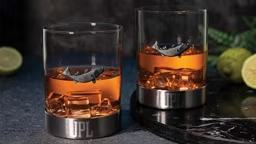
The cabin is picture perfect. Nestled on a spot of open shoreline, it beckons. The only thing this little slice of heaven is missing is a bridge between fun in the yard and fun on the water. This cabin needs a place for fishing, swimming and a place to tie up the boat. This cabin needs a dock.
But, for the vast majority of us, buying a new (or replacement) dock isn’t as simple as heading to the local lumber store and slapping some planks together. That small strip of shoreline, the water just beyond it and the lake bottom have a lot to do with what kind of dock you’ll need.
Shopping for a dock can be a bit overwhelming. There are so many companies and so many excellent products, it can be tempting to just close your eyes and pick one, trusting that the craftsmanship and quality will equal a perfect dock for you. That might work, but your odds of making the right pick improve greatly with just a little research.
See also How to Get Out on the Water and Love It
The Big 4 Qs
1. Start with the shoreline.
Pick the spot on your property with the most natural access to the water. Now take a closer look: Is the slope leading to the water steep or gradual? Is it shrouded in vegetation, is it rocky or is it a clean, wide-open space?
2. Not every lake is created the same.
The next step in picking the perfect dock is to determine what your lake is made of. Is the surface wavy or calm? Is there a strong current? Is it deep or shallow?
3. Now take a closer look at the lake bottom.
Is it rocky or silty? This information will also greatly influence what type of dock you buy.
4. Finally, contact your local lake association and check with city, county and state governments.
Are there any restrictions and permit issues that may affect your dock choice or placement?
See also The Lakeside Cabin with a Boat Bar
Map It Out
Now that you’re more familiar with your waterfront, a vital next step is to make a map of it. You can either do it freehand with a pad and pen, or you can go high-tech and utilize the free dock layout software that companies like ShoreMaster and EZ Dock offer on their websites.
Include such standard items as your property lines, location of utility pipes and lines, and sizes and locations of pre-existing structures like your cabin and tool shed. Don't forget to jot down a sketch of the shoreline’s shape as well as the direction of prevailing wind and currents.
Before you call it a day, get wet and do your best to inspect the underwater topography of the lake itself at your cabin’s waterfront, noting the locations of potential hazards like large rocks or sand bars.
Now it's time to use this information to choose a dock!
Floating Docks
This dock is usually constructed out of plastic or other non-wood material. It is generally inexpensive and installation is fairly straightforward.
Well-suited to deep water or mucky bottoms, this dock type doesn’t require much in the way of a support structure and can be secured solely to the shore, meaning there is no contact with the bottom at all.
Floating docks are also a good choice for people on reservoir lakes with fluctuating depths or on busy waterways who are often battered by large waves and wakes. Since the dock floats on top of the water, the amount of freeboard (space between dock and water) stays constant – which means your dock won’t end up underwater or high and dry. This dock is also particularly attractive to people wishing to minimize the environmental impact a dock will make on their lake bottom.
A common concern about floating docks is stability. Instability is, however, often the result of common installation errors. Also, if you decide to go with a floating dock, keep in mind that most dock builders recommend a minimum size of 6 feet wide by 20 feet long – wider is more stable.
Many manufacturers feel that floating docks work at their full potential when kept in the water year-round, but if shifting ice is an issue at your cabin, they can be removed seasonally.
See also A Transformed Family Lake Cabin in Wisconsin
Standing Dock
This type of dock is basically a platform suspended above the water by metal support legs or pipes. This keeps the dock at a constant height, no matter what happens on the water. This can be both a blessing and a curse, however.
Large waves will pass right under the dock, helping to extend the dock’s life, but fluctuations in water level could have you adjusting the height of your supports.
Due to its support structure, the standing dock can be built smaller than a floating dock without losing any stability. It also is an excellent choice for eco-conscious shoppers, as it makes minimal contact with the lake bottom and allows a good amount of sun through for underwater plant life.
For people who live in icy climates, standing docks generally have their metal foot plates swapped out for wheels, allowing an easy transition from water to storage on shore during the winter months – provided you have a gradual incline from water to land and a tree-free area to park the dock.
See also Managing Lake Weeds at Your Cabin
Other Dock Types
Additionally, you can sink long wood posts or metal pipes into the lake bottom to create a permanent dock structure, called a pile dock. However, due to the fact that the dock rests upon a supporting structure, it’s not advisable to use this type of dock in icy areas or in water deeper than 6 feet, as its stability will be compromised.
Cantilever and drawbridge docks are suspended over the water and attached to the shoreline. These docks are appealing to those with strong currents in their waters, and they also do very little damage to the water and lake bottom beyond your shoreline – since they never touch either. They work best in areas with steep slopes, but can be used in other areas too.
Armed with this knowledge, you’re ready to head out and find the type of dock that’s perfect for your shoreline. A little research and planning up front will ensure that you’ll enjoy your dock and your stretch of beckoning water for years to come.
Andy Bennett doesn’t own a dock, but he has jumped off his fair share.







